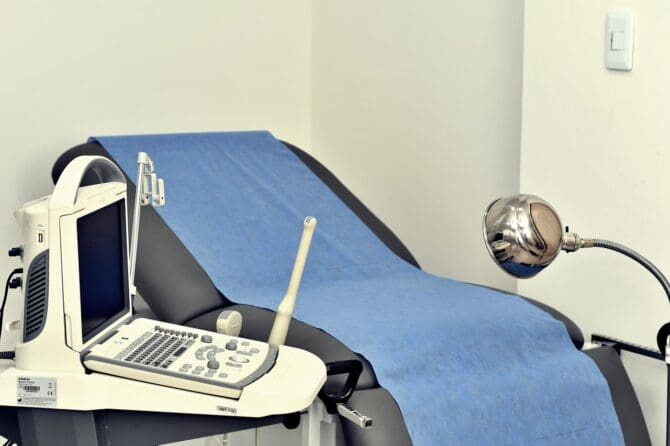Around the world, diastasis recti is commonly known as abdominal separation. It is a condition that pregnant women may suffer from during and after their pregnancy. The main symptom of diastasis recti is a noticeable bulge in the stomach, caused by the rectus abdominis muscles separating at the midline of the stomach.
There are many ways to treat diastasis recti, but the most important thing is to focus on strengthening the core muscles. This can be done through a variety of exercises, such as planks, sit-ups, and crunches. If you are suffering from diastasis recti, it is important to seek help from a medical professional. They will be able to help you create a treatment plan that is right for you. With the right treatment, you can heal your abdominal separation and get back to feeling your best.
1. Diastasis recti is a condition that can occur during or after pregnancy. 2. It is caused by the separation of the rectus abdominis muscles. 3. The symptoms of diastasis recti include a bulge in the abdomen, back pain, and difficulty with core exercises. 4. Diastasis recti is treated with physical therapy and exercises that help to strengthen the core muscles. 5. Surgery is an option for severe cases of diastasis recti. 6. Prevention of diastasis recti includes avoiding activities that place strain on the abdominal muscles, such as sit-ups, and performing exercises that strengthen the core muscles. 7. Diastasis recti is a common condition that can be treated with physical therapy, exercises, and in severe cases, surgery.
1. Diastasis recti is a condition that can occur during or after pregnancy.
Diastasis recti is a condition that can occur during or after pregnancy. It is a separation of the abdominal muscles at the midline of the body. This condition can cause the stomach to protrude and can make it difficult to return to the pre-pregnancy size and shape. Diastasis recti is a common condition, affecting approximately 33% of women after pregnancy. There are several ways to treat diastasis recti, including exercises, weight loss, and surgery.
2. It is caused by the separation of the rectus abdominis muscles.
The rectus abdominis muscles are the muscles that make up the abdominal wall. They are located on either side of the vertebral column and are attached to the ribs. The rectus abdominis muscles are responsible for flexing the trunk, as well as assisting in the expiration of breath. During pregnancy, the expanding uterus put pressure on the rectus abdominis muscles, causing them to separate. This condition is known as diastasis recti. Diastasis recti is a condition that can occur during pregnancy, but it can also occur in non-pregnant women and men. The condition is more common in women who are pregnant with twins or multiple babies. Diastasis recti is a condition that is caused by the separation of the rectus abdominis muscles. The condition can occur in pregnant women, but it can also occur in non-pregnant women and men. The condition is more common in women who are pregnant with twins or multiple babies. The symptoms of diastasis recti include a bulge in the abdomen, back pain, and difficulty with bowel movements. Diastasis recti is treated with physical therapy, which helps to strengthen the abdominal muscles. Surgery is only recommended in severe cases.
3. The symptoms of diastasis recti include a bulge in the abdomen, back pain, and difficulty with core exercises.
When someone has diastasis recti, it means that the abdominal muscles have separated. The most common symptom of this is a bulge in the abdomen, which can be seen and felt. Other symptoms include back pain, difficulty with core exercises, and urinary incontinence. Diastasis recti can occur in both men and women, but it is most common in women who have been pregnant. It is also more common in people who are overweight or have a large waist. If you think you might have diastasis recti, it is important to see a doctor. They will be able to confirm the diagnosis and recommend treatment. Treatment may include lifestyle changes, physical therapy, and surgery.
4. Diastasis recti is treated with physical therapy and exercises that help to strengthen the core muscles.
Diastasis recti is treated with physical therapy and exercises that help to strengthen the core muscles. Physical therapy helps to heal the connective tissue and muscles that are stretched or torn. Exercises that help to strengthen the core muscles can prevent the condition from getting worse and help to improve the function of the muscles.
5. Surgery is an option for severe cases of diastasis recti.
Surgery is not typically recommended for diastasis recti, as the condition can often be corrected through diet, exercise, and physical therapy. However, in severe cases where the abdominal muscles have been significantly stretched and weakened, surgery may be necessary to repair the damage. During surgery, the abdomen is opened and the damaged muscles are repaired and tightened. The skin is then re-attached to the newly repaired muscles. In some cases, a small piece of mesh may be used to help support the repair. Recovery from surgery usually takes 4-6 weeks, and patients may need to wear a compression garment to help support the healing process. While surgery can be effective in correcting diastasis recti, it is not without risks. Complications from surgery can include infection, bleeding, and blood clots. There is also a risk of re-opening of the incision. For these reasons, surgery is typically only recommended for severe cases of diastasis recti.
6. Prevention of diastasis recti includes avoiding activities that place strain on the abdominal muscles, such as sit-ups, and performing exercises that strengthen the core muscles.
Prevention of diastasis recti, or separation of the rectus abdominis muscle, can be achieved by avoiding activities that place excessive strain on the abdominal muscles. Sit-ups, for example, can put undo stress on the rectus abdominis and should be avoided. Exercises that strengthen the core muscles, such as Pilates or Yoga, can help to prevent diastasis recti by providing support to the abdominal muscles.
7. Diastasis recti is a common condition that can be treated with physical therapy, exercises, and in severe cases, surgery.
Diastasis recti is a common condition that can be treated with physical therapy, exercises, and in severe cases, surgery. Diastasis recti, also known as abdominal separation, is a condition that affects the abdominal muscles. The condition occurs when the abdominal muscles separate at the midline of the abdomen. This can happen during pregnancy, but it can also occur in people who are not pregnant. Diastasis recti can cause a number of symptoms, including pain in the abdomen, back pain, hernias, and urinary incontinence. The condition can also make it difficult to lose weight, as the abdominal muscles are not able to support the body as they normally would. Treatment for diastasis recti typically begins with lifestyle changes, such as losing weight and avoiding constipation. Physical therapy and exercises that target the abdominal muscles can also help to improve the condition. In severe cases, surgery may be necessary to repair the abdominal muscles. If you are concerned that you may have diastasis recti, speak to your doctor. They will be able to assess your symptoms and determine the best course of treatment for you.
Diastasis recti is a condition that can occur during or after pregnancy in which the stomach muscles separate at the midline. This can cause the belly to protrude and can lead to back pain and other issues. Although it is not a serious medical condition, it can be uncomfortable and difficult to treat. There are a number of exercises and other treatments that can help to improve the condition.











